Looking for the best hanging basket plants this year to grow in the shade to finally bring some big flower power and color to the less-than-sunny parts of your landscape?
All too often, gardeners think their covered front porches, decks and patio areas are all but impossible to light up with flowering plants. It’s certainly an understandable thought. After all, common big blooming annuals like petunias, marigolds and geraniums need a lot of sunlight to flower.
Because of that, many gardeners limit their choices for their shady areas to ferns and other greenery options that thrive in low light situations. Although ferns do well in low light and can be quite beautiful, they don’t exactly ooze with color.
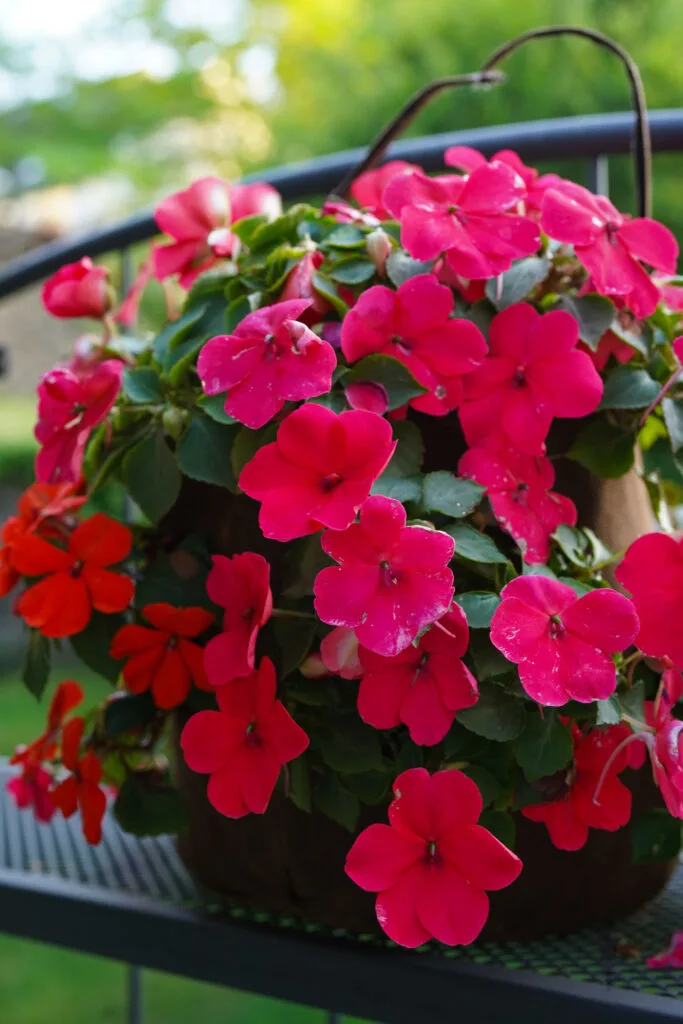
But just because an area gets only a few hours of direct or filtered sunlight – it doesn’t mean you can’t have a few flowering annuals bloom there to brighten it up. In fact, surprisingly, there are quite a few flowering annual options that do quite well with little to no sunlight.
Even better, all happen to make the perfect pairing with a fern or other greenery to really bring a space alive!
Not All Light Is The Same – The 4 Best Flowering Hanging Basket Plants For Shade
The real key to growing in the shade is knowing first just how much light an area gets. All plants need some light to survive – whether it is direct sunlight or indirect. Direct light is when the sun shines in full view of the plants. Indirect, on the other hand, is light that comes into an area that has a shade source over it.
An area that gets no direct sunlight but gets plenty of indirect light from the sun can still grow many shade loving plants quite well. And yes, that even includes flowering plants! In addition, a location that receives a few hours of direct morning or evening sunlight can still grow shade loving plants too.
But where many shade loving plants fail is when they get a few hours or more of hot afternoon sun. Morning and evening sunlight is far less intense than mid-day sun. Because of that, only select shade plants for areas that do not receive midday sun as their light source!
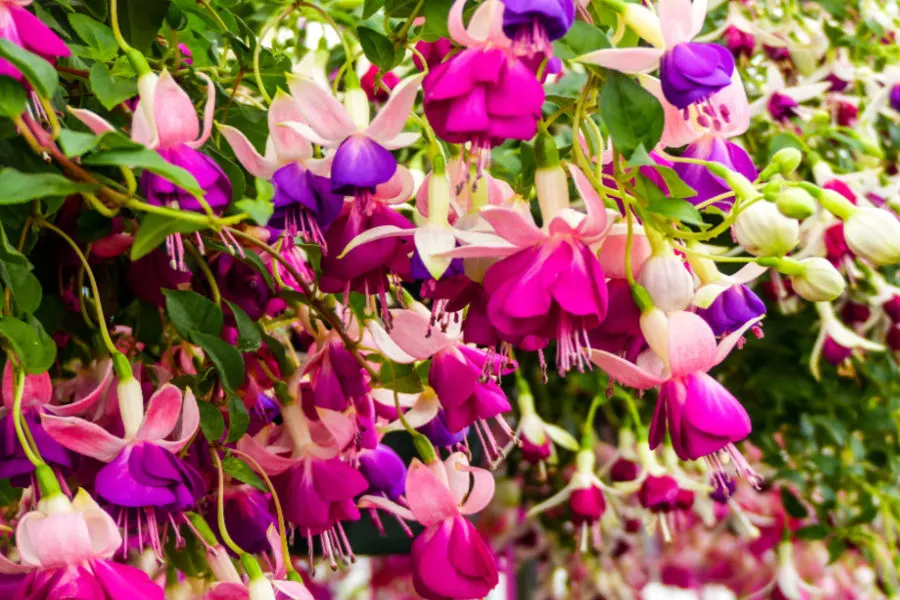
Midday Sunlight Versus Morning & Evening Sun
As an example, if you have a porch or deck area that is in the shade all morning and evening but gets a lot of midday sun – you are much better off selecting a sun-loving plant. A shade plant might get less early and late, but the midday sun will simply scorch it.
With that thought in mind, here is a look at four of the best options to bring big blooms and color to less than ideal lighting situations around your landscape.
4 Flowering Hanging Basket Plants That Are Perfect For Shade
Fuchsia
Fuchsia (pictured above) is one of the biggest, brightest and most colorful shade loving plants of all. It’s dangling blooms light up hanging baskets with a stunning display of cascading flowers that resemble fireworks falling from the sky.
The plants are perfect for hanging baskets. Not only will the foliage spill over and down the edges of the basket, the blooms dangle from the ends of the stems to keep all of the color at eye level. And that color can be intense! From orange, red and white, to deep purple and pink – the flowers seem to leap from the foliage.
Listen To Our Podcast Below On How To Keep Your Hanging Baskets Blooming All Summer Long!
One thing fuchsia cannot handle is intense sunlight. That, of course, makes it perfect for bringing big color to partially shaded areas like porches, decks and patios that might only get morning or late evening sun.
To get the most from this gorgeous annual, keep it well watered and fertilized. The constant blooms can quickly zap the nutrients from the soil, so keeping it powered up is a must! For more on growing fuchsia, check out : How To Keep Fuchsia Blooming All Summer
Impatiens – 4 Flowering Hanging Basket Plants Perfect For Shade
Impatiens have long been the standby annual for providing a mass of color in shady locations. When placed in the right location and allowed to grow in fertile, well-draining soil – impatiens can produce so many blooms that it becomes hard to see the foliage!
Impatiens varieties can be found in nearly every blooming color imaginable. Not only do they look great on their own, they are also one of the best flowering annuals to pair with ferns and other low-light loving greenery.
The bright blooms of impatiens pair well with any shade of green, and their shallow and smaller root systems are perfect for planting in containers with other plants.
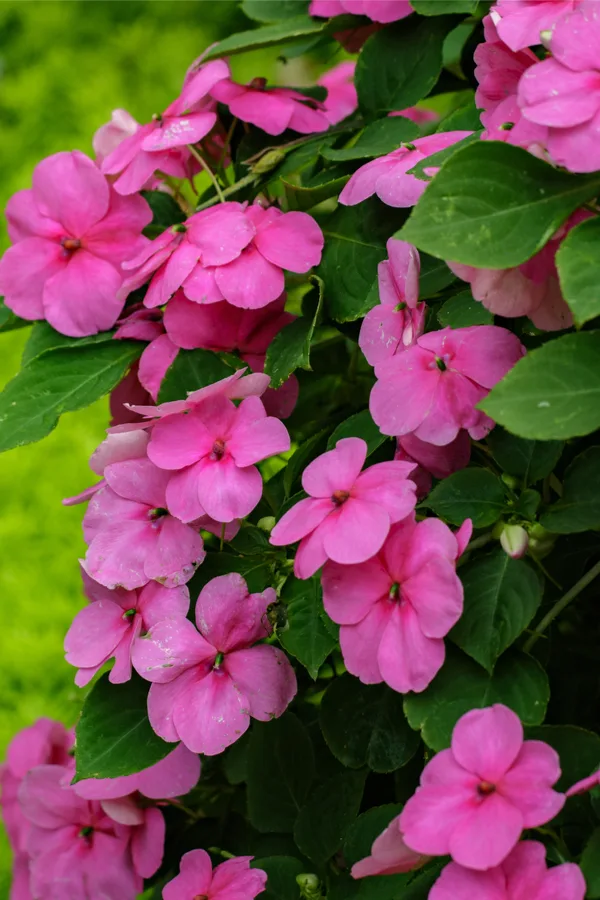
For impatiens to bloom well, place them in a location that receives no more than a few hours of direct sunlight each day. As with nearly all shade plants, early morning or late day sun if far better than mid day sunlight.
Finally, for impatiens to continue to thrive and bloom, they need consistent water and fertilizer. Fertilize with with light doses every ten to fourteen days. Do not allow the soil to completely dry out between waterings.
At the same time, be careful not to allow the soil to stay overly wet either. Impatiens can suffer easily from both rot and mildew, so always water wisely. This is where an inexpensive moisture meter can really come in handy for an instant read of the soil! Affiliate Link : Soil Probe Moisture Meter
Bleeding Heart – 4 Flowering Hanging Basket Plants Perfect For Shade
Often confused as a fuchsia plant, bleeding heart is another great choice for growing big blooms in the shade. The blooms of fuchsia and bleeding hearts are certainly similar. And to boot, both plants also dangle their booms in cascading fashion.
But when it comes to the difference between the two, the blooms of the bleeding heart are, you guessed it – in the shape of a heart that looks like it might just be bleeding!
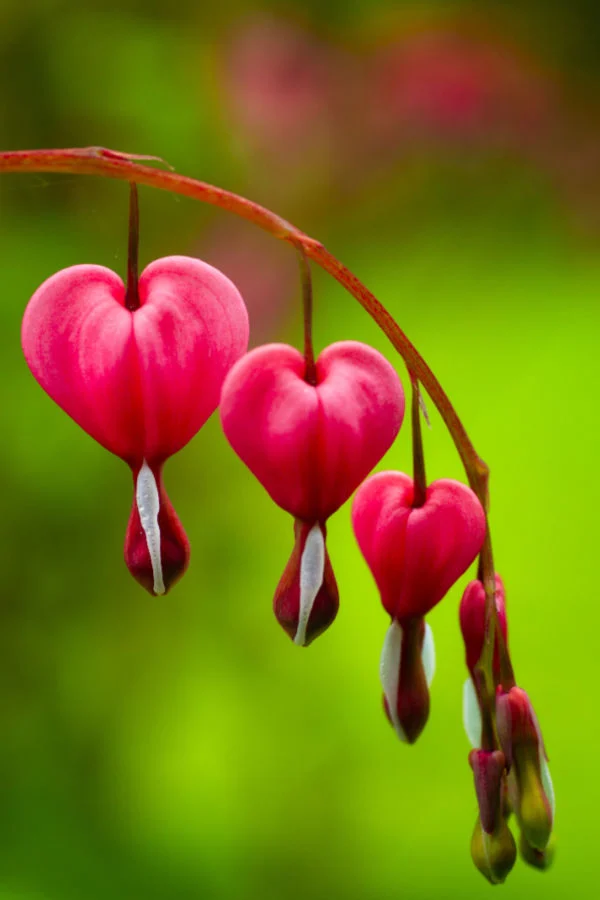
Much as with other blooming annuals that perform best with some shade, bleeding heart will flower best when it has a bit of morning or evening sun. Avoid locations with hot afternoon sunlight, and plant in rich and well draining soil.
The plant requires a fair amount of moisture, but never allow the soil to remain wet for too long. The plants root system can rot out when it sits in water too long. Always allow the soil to dry out between waterings for best results.
Coleus – 4 Flowering Hanging Basket Plants Perfect For Shade
The last plant on our list of shade loving, color-adding annuals is Coleus. And is it ever one special plant! Not only can it provide huge amounts of interest and color to low-light areas – it does so not with its blooms, but with its amazingly patterned and colorful foliage!
The leaves of coleus are filled with bright, interesting colors and patterns. The foliage is so bright that it often looks as though the plant is glowing under a neon light.
Coleus is a member of the mint family. It is actually a perennial in climates without cold winters. Coleus can be brought indoors to grow as a houseplant in cold climates. It performs magnificently in low light areas. In fact, it only requires a few hours of direct sunlight or good indirect lighting to flourish.
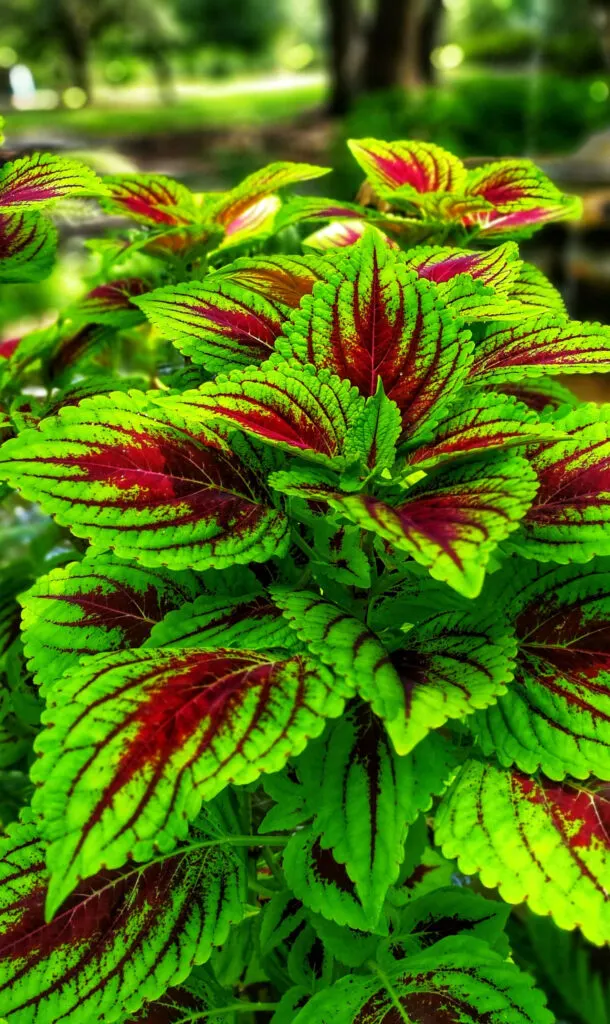
The plant requires little in the way of additional fertilizer to stay healthy all season long. Interestingly enough, Coleus does produce a bloom, but it’s best to remove it. The blooms are tiny and not overly impressive, but will take energy from the plant so removing them is best.
Here is to adding some big color to the shadier parts of your landscape this year!
Follow Our Facebook Page For Great Gardening Tips And Advice! This Is My Garden Facebook Page
This Is My Garden is a garden website created by gardeners, for gardeners. Jim and Mary Competti have been writing gardening, DIY and recipe articles and books and speaking for over 15 years from their 46 acre Ohio farm. They publish three articles every week, 52 weeks a year. Sign up today to follow via email, or follow along!
